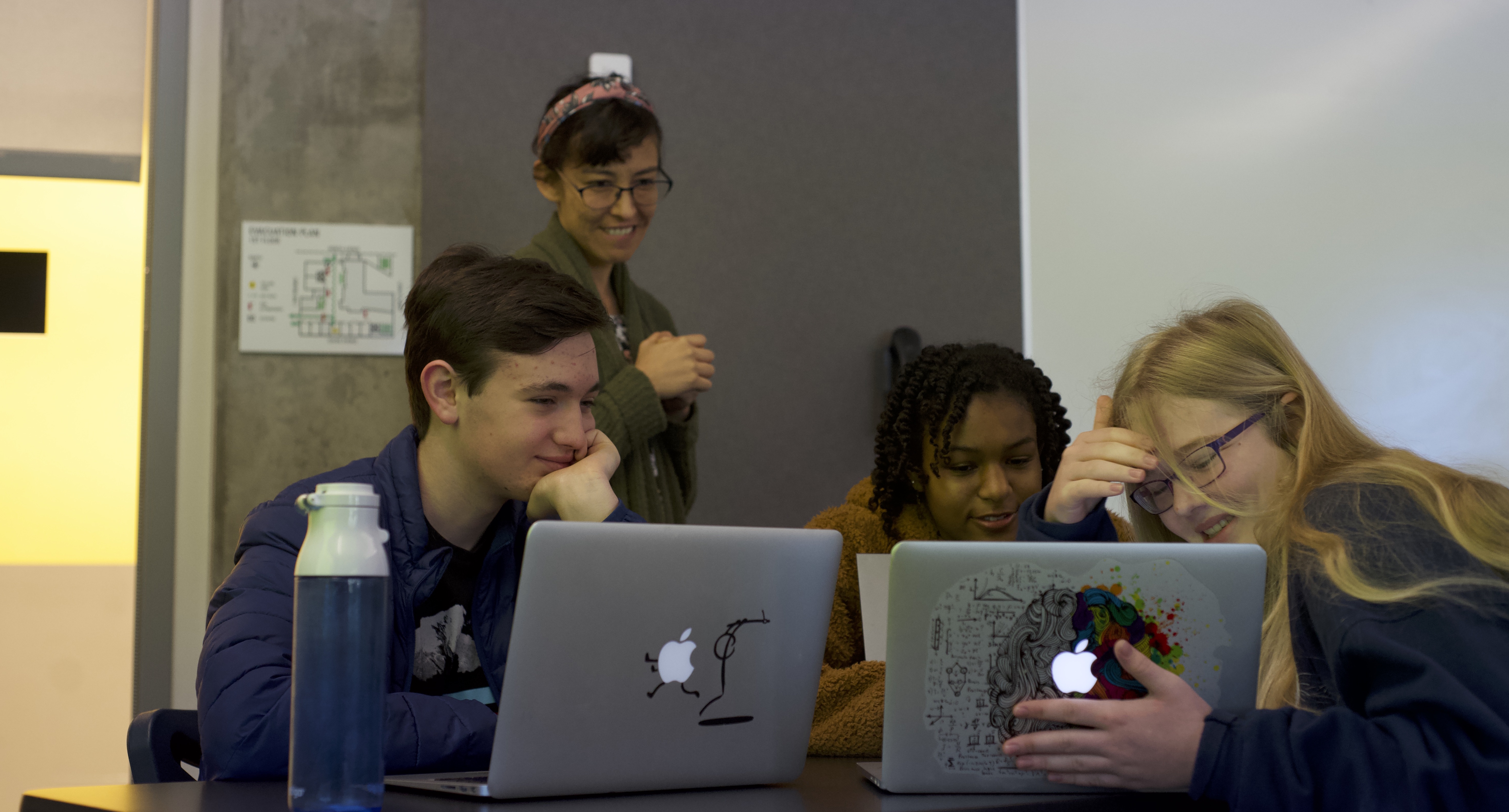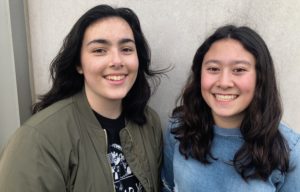Sex education is getting a lot more attention at Lick-Wilmerding this year, as the Body Mind Education (BME) department launched a brand new required class for sophomores.
Frosh BME health classes this year now focus on drug and alcohol use, abuse, and safe decision making. Sophomore Health and Wellness, the new class, tackles sex-ed, sexuality, and healthy relationships.
Erin Merk, a health and BME teacher who has taught at LWHS for 13 years, said, “We realized for a long time that we can only deliver so much sex-ed frosh year.”
“We’ve been trying to get this class going for years,” Assistant Head of School Randy Barnett said. When Barnett first came to Lick, there was a course called Issues and Choices, a small portion of a required frosh PE class. In Issues and Choices, juniors and seniors who had taken a “Peer Education” course taught underclassmen about drugs, sex, and critical developmental issues. That course was eventually phased out because of scheduling adjustments.
Barnett said that when he was Dean of Students, it became clear that LWHS needed a more thorough sex education program. This was evident from “a lot of feedback from older students who had graduated the school and said, ‘You know, we never had a class on sex ed, we had an introduction in frosh Bio but we didn’t learn about these topics.’” Barnett added, “Pretty much every high school has a health class. We didn’t.”
LWHS had tried different configurations of health classes, including a class for sophomores after school, a program through advising in which older students were trained to teach health content to younger students. There was a period when there was no curricular sex-ed except in regular class meetings and assemblies.
Barnett said it was scheduling considerations that kept the school from a formal sex-ed program. “The reason we didn’t have it at this school is not because we didn’t care, but we had a lot of other things [to juggle],” Barnett said.
Though there is only so much time in a student’s day, a formal health class finally took priority. “For us not to do that or to just do it in those little pieces just didn’t feel right,” Barnett said. “We have [a] responsibility as a school to educate teenagers about sex, sexuality, relationships, and living a healthy life.”
Dean of Students Kate Wiley became the principal driver of the new class, according to Barnett.
As Wiley sees it, a young person’s sexual education “is as integral as your mathematical brain development or history brain development.” Speaking of the reasons to create a formal course, Wiley said sex-ed “couldn’t happen in any other setting.”
BME teachers developed the curriculum for Sophomore Health and Wellness by working with The Urban School of San Francisco’s health teacher, Shafia Zaloom. A well-known figure in the world of sex-ed, Zaloom’s self-described “real, relevant, ready” approach to health education and focus on affirmative consent has been featured in The New York Times, PBS, NPR, and KQED.
Lick also drew from “Our Whole Lives,” the Unitarian Church human sexuality program and the San Francisco Unified School District’s sex-ed curriculum. The developed curriculum covers the gender identity and sexual orientation spectrums, healthy relationships and breakups, the effects of pornography on teen minds, toxic masculinity, consent, sexual responsibility, safe sex, as well as resources for LWHS students, such as Bay Area clinics and laws that protect teens.
Merk, Chair of Body-Education, and Diana Súarez-Vargas teach then new sophomore class.
Before coming to LWHS, Súarez-Vargas was a Health and Wellness teacher for three years in the Ravenswood School District in East Palo Alto. She worked with Stanford and a health and mindfulness organization called Pure Edge to develop a health curriculum for vulnerable populations that is similar to what is now taught at Lick. Her primary goal in teaching this new curriculum is that her students “have the knowledge of everything [that] is out there and are prepared to make” healthy choices.
Merk said her main hope for the sophomores is that they learn “to not be passive in the culture of sexuality that they are inheriting.” Merk wants to teach her students “to actually see when something is potentially harmful to another person and how to act differently.”
Lick’s emphasis on the personal, emotional aspects of sexual education is part of a national trend. “We are by far not alone in this work,” Barnett said. “We all want to help students build healthier lives…A major national trend is increased focus on social-emotional learning. Sex is a huge part of that.”
Ananya Sridhar ’21 appreciates that the curriculum takes a wide perspective. “I felt like the curriculum wasn’t throwing a certain narrative at us. Instead they were presenting us with facts and encouraging us to develop our own perspectives and discuss with each other, which I thought made it an inclusive environment.” Jeremy Lum ’21, appreciates his class as a “safe space to discuss.” Sridhar said that overall, Health and Wellness “was a positive experience.”
Sophomores referenced particular parts of the curriculum that resonated with them. In particular, Kalin Sivolella ’21 appreciated a discussion about how gender education should be taught in schools that “felt really relevant.” Sridhar noted that her class “had some discussions about party and hookup culture which is definitely really relevant going to high school.” Sridhar also mentioned she appreciated learning “about things like contraceptives and STDs in a way that provides us with action points rather than just biology.” Her newfound knowledge “is a really useful skill for the future,” she said.
Despite feeling that they had learned important information and had grown, several sophomores felt uncomfortable about discussing deeply personal topics with their teacher and peers. For example, one of the activities was digital journaling and some students said that prompts felt too personal, sometimes even intrusive.
Merk reflected on her approach to the journaling process. “I think [the digital journal] is a great idea, but sometimes some of the topics, especially ones which I made up, asked questions that the students mentioned were just too personal, and that the students felt uncomfortable talking about. So over the course of the semester, I personally adjusted what I wanted the students to write about to be a little more general and gave them options in their writing,” she said. “If the question was ‘how ready do you feel to become sexually active,’ and a student didn’t want to share a response, they could respond to the prompt, ‘how does it feel to think about those questions?’”
“Some of [the prompts] were very personal,” Christy Yee ’21 said. “Even though they weren’t shared with the entire class, it kind of made me uncomfortable knowing that that was written and out there, that my teacher would be able to see that.”
Because the journals weren’t anonymous, Sridhar also recalled some discomfort. “They were going in a[n online] folder that was visible by the teacher. And there were some questions that I feel like a lot of us wouldn’t want to answer in a way that would be completely visible to the teacher.”
One journaling prompt, Sivolella recalls, asked how the student’s relationship to gender had changed throughout their life. To Sivolella, “That question in particular felt really exposing to me and I felt like I had to talk a lot about things that I would never really want to have to talk to a teacher about. And I didn’t really feel like there was a way out of talking about it.”
Barnett encourages students to advocate for themselves and their personal boundaries in sharing. He posited, “If I ask you a question in class and you find it uncomfortable, can you say ‘Actually I’m uncomfortable sharing that right now?’”
Journey Moore-Prewitt ’21 recalls a time when she was not comfortable sharing the personal information prompted. She answered simply yes or no to a few questions instead of elaborating. “I didn’t really explain my answers in the journal” because it was shared with the teacher online, Moore-Prewitt said.
Barnett said, “the journals are not to expose secrets of students, but they are, like everything else, a demonstration of learning. I guess not all students are picking that up, and so as teachers, how can we communicate better the safety and reasons why we assign these kinds of assignments?” Barnett assured that “students not wanting to share is legit, and sometimes a few students aren’t comfortable.” He therefore hopes that students and teachers continue a dialogue about balancing privacy with the inherent personal nature of courses about sexuality and health; “This is a course that deals with personal issues, because this course is devoted to your healthy personal development as a human being. This course will ask you certain things to share. But we also want to respect privacy. So, how do you balance that? That’s a dialogue, right?”
Wiley mentioned that in creating discussion space, she’d “rather push a little bit and hear back from kids that it didn’t feel good,” rather than “not open up space to have meaningful conversation and relationships.”
While students may feel uncomfortable in their health classes, Barnett assured that the teachers are ultimately cultivating a safe environment. “At first the health teachers may seem like strangers to the students, but the school has to have trust in these people’s… ability to maintain safety, confidentiality, and trust… So in terms of what’s really unsafe, from the school’s perspective it’s not. Yet, every human being has a different threshold for what feels unsafe. You know, it’s a dialogue, it’s a work in progress.”
Wiley stressed that Health and Wellness is not the only class where students are expected to be vulnerable. This is a common expectation amongst departments and courses. Yet sometimes when instructors plan, “We’re not sure how things [will] land with kids,” she said.
Another activity that landed differently than expected with students was the mandatory “body map” project at the beginning of the semester, a project which included having an assigned partner trace one’s body onto butcher paper, cut it out, decorate it, and annotate it with personal experiences relating to different body parts or the student’s physical self in general. “As we were doing it, a lot of people were like ‘I don’t want to trace my body. I feel uncomfortable doing that,’” Moore-Prewitt said. Students expressed that the activity made them uncomfortable due to body-image issues and personal concerns.
Súarez-Vargas had done the activity previously “with a completely different population.” She explained, “The purpose was to set the stage to be able to talk about deeper subjects.”
Súarez-Vargas responded to student feedback and will not do this assignment again.
In response to feedback from the first semester, several changes have been made to the curriculum.
Deans, teachers, and students alike said that some student resistance to the class was because it took away a time slot that would have been open for an elective or free.
As the semester progressed, Merk noticed students becoming more comfortable with each other and the curriculum, and less angry about having to be in the class in the first place. “I noticed the upset students really changed in terms of how they were viewing the topics and their realizations about what it means to know something intellectually,” Merk said.
Sridhar felt her class got more productive and positive as time went on. Because of the topics covered, it was inevitable that “it started off a little bit quiet in the class,” she said. “What…was positive was that as time went on we got more comfortable with each other and we were able to get into really good discussions with each other about varying topics.”
An anonymous sophomore mentioned that her experience in the class improved as time went on and students realized the greater necessity behind taking the course. Eventually, she said, “it became clear that we were there to understand important things that could affect your life.” She said the class began to feel less like a traditional classroom environment and became more student-led, with students providing more input on what felt relevant.
Wiley noted that it’s going to take time for Sophomore Health and Wellness to become a seamless part of the Lick experience. “It’s going to take a few years for the culture to shift,” she said. “The first time something new is tried it’s hard… and that’s okay.”
Barnett said student feedback will make the class better. Sophomore Health and Wellness is here to stay, with the intention of better equipping LWHS students for a healthy future. “I’m optimistic about the course,” Barnett said. “Ultimately, what I want to see happening is that we have a four year trajectory around all health components, to graduate the healthiest students possible.”







